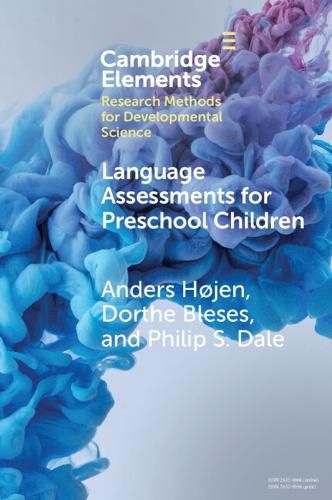Readings Newsletter
Become a Readings Member to make your shopping experience even easier.
Sign in or sign up for free!
You’re not far away from qualifying for FREE standard shipping within Australia
You’ve qualified for FREE standard shipping within Australia
The cart is loading…






This Element has two main purposes. Firstly, it discusses purposes, advantages, and disadvantages as well as the challenges of different formats of language assessment, concluding with a focus on educator-administered language assessment in early childhood and education programs. It addresses the selection of assessment domains, the trade-off between brevity and precision, the challenge of assessing bilinguals, and accommodating the requirements of funders (e.g., government agencies) and users (e.g., educators and schools). It draws on lessons learned from developing two instruments for a national Danish-language and preliteracy assessment program. Secondly, it introduces those two educator-administered instruments-Language Assessment 3-6 (LA 3-6) and Language Assessment 2-year-olds (LA 2)-with respect to content, norming, gender and socioeconomic influences as well as psychometric qualities. The intention is that this experience can help enable the extension of the educator-based approach to other languages and contexts, while simultaneously acknowledging that linguistic and cultural adaptations are crucial.
$9.00 standard shipping within Australia
FREE standard shipping within Australia for orders over $100.00
Express & International shipping calculated at checkout
This Element has two main purposes. Firstly, it discusses purposes, advantages, and disadvantages as well as the challenges of different formats of language assessment, concluding with a focus on educator-administered language assessment in early childhood and education programs. It addresses the selection of assessment domains, the trade-off between brevity and precision, the challenge of assessing bilinguals, and accommodating the requirements of funders (e.g., government agencies) and users (e.g., educators and schools). It draws on lessons learned from developing two instruments for a national Danish-language and preliteracy assessment program. Secondly, it introduces those two educator-administered instruments-Language Assessment 3-6 (LA 3-6) and Language Assessment 2-year-olds (LA 2)-with respect to content, norming, gender and socioeconomic influences as well as psychometric qualities. The intention is that this experience can help enable the extension of the educator-based approach to other languages and contexts, while simultaneously acknowledging that linguistic and cultural adaptations are crucial.